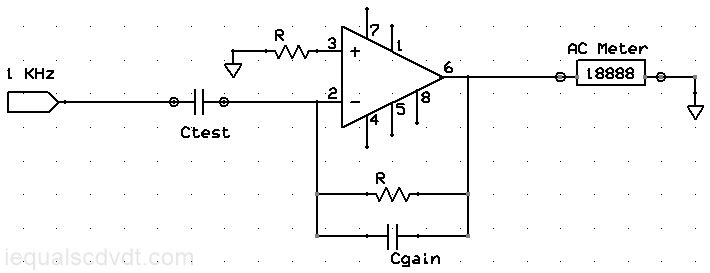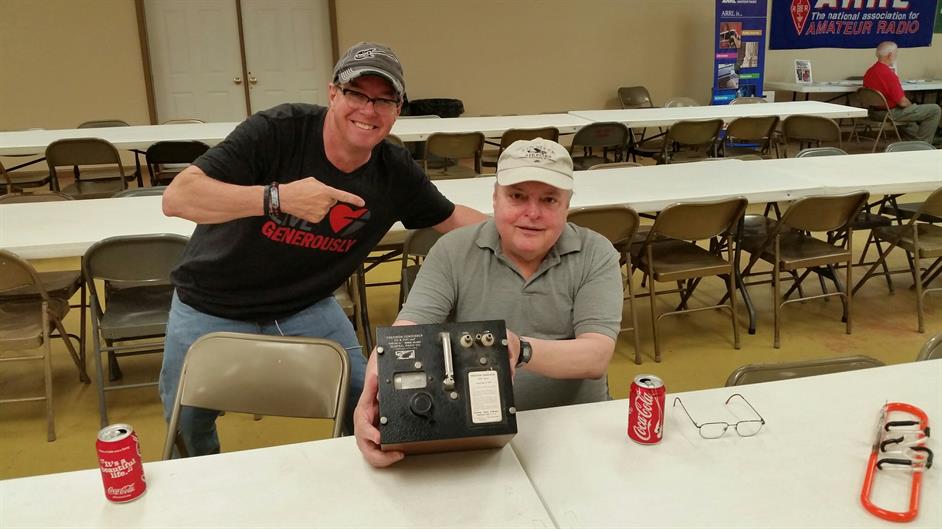
Home brew capacitance circuits:
There are any number of simple capacitance measurement circuits. Most have been based on 555 timers or other IC oscillators. Today, people might use a small micro board like an Arduino, see http://arduino.cc/en/Tutorial/CapacitanceMeter.
Most simple capacitance circuits don't handle very low capacitance very well and have a lower limit. There is an unusual circuit that does give a very good zero and very good linearity. The down side is that its upper limit is only about 1 uF, maybe 10 uF or more with very good design. This makes it good for selecting accurate capacitors for RIAA phono preamps or active filters. Also, you need several accurate capacitors for calibration, 0.5% or better. Not sure where you would find those at a reasonable cost. It doesn't do ESR and ESL, but how many hobbyist need that? Meters that do that well are very expensive.
The circuit needs a little experimentation to get the best linearity over the widest range. The op-amp must be a fast one, at least 5 MHz gain-bandwidth and faster might be better. It must be able to drive Cgain at 1 KHz. It should have as low a bias current so the Rs (which supply the bias currents) can be as high as possible. Otherwise they will cause a gain error. I used an LF356 and it worked very well.
If you want to measure 0-1000 pF, then set Cgain to 1000 pF. Then when Ctest is 1000 pf, the AC gain will = 1. If you want to measure 0-10 pF, you can. However, you may never get much better than 0.1% accuracy. What you are after is the "true" capacitance number, but ESL and ESR will fool any simple measuring circuit like this one into errors . See the Capacitor Model page.
The version I actually breadboarded is a little rough. I built it out of parts I had available. It works well from 0-10 pF full scale to 0-1uF full scale with < 0.1% nonlinearity (<0.05% on most ranges). This topology is not well suited for higher ranges. A faster op-amp in the C--> converter might improve this however. The real problem is getting a bunch of 0.05% capacitors for proper calibration. Another problem is stray capacitance from the range selection switch. There are probably ways around that.
The capacitors should be C0G for most parts and PP for DC filtering.
The 555 and comparator should be well shielded from the C --> voltage converter.
http://www.planetanalog.com/document.asp?doc_id=527457 More information on the tricky business of measuring capacitance.
Test equipment:
GR 722:
The picture below is of a General Radio 722-D dual-range air variable capacitor. This one was made in 1945, the earliest I have seen. They were used for such things as calibrating aircraft capacitive fuel sensors. Modern versions are still available from IET Labs for $11,000 on up! I paid $20. I'll post a picture of the inside soon (or someday).

gain = Ctest/Cgain

GR 1409:
Like the GR 722s, The original GR 1409s are commonly found for sale on Ebay and other sites. These are high precision, single-value capacitors, either 0.1% or 0.05% accuracy. They use silvered-mica capacitors. IET Labs, the successor to General Radio makes a new version of the 1409s starting at $1000+.
Some people claim that the original 1409s have shown excellent stability over the years and you can expect them to still meet their original specifications. However, this seems to depend on how they were stored, and that moisture absorption may have caused both the value and dissipation factor to drift off. They were not hermetic, but were sealed with wax with silica gel desiccant inside an aluminum body. This is a system guaranteed to not last. Only glass and metal will keep moisture out long term. Some of them at least, can be brought back to their original specifications by a long-term bake-out (hours to weeks) at no more than 55C.
GR other:
General Radio sold a variety of capacitance decade boxes over the years. These used silvered-mica capacitors most often, but polystyrene and even paper (paper-in-oil?) were used in some models. Again, IET Labs has picked up where GR left off. Silvered-mica capacitors are still used for their long-term stability.

http://www.andeen-hagerling.com/ Their main product, the 2700A is around $20k, I think.
http://www.ietlabs.com/lcr-meter.html These guys seem to be the successors to General Radio.
http://www.keysight.com/en/pd-715495-pn-E4980A/precision-lcr-meter-20-hz-to-2-mhz?nid=-34124.536908436&cc=US&lc=eng The LCR meter of my dreams. Keysight...previously known as Agilent, previously known as HP. All this name changing tends to lower my faith in their products.



